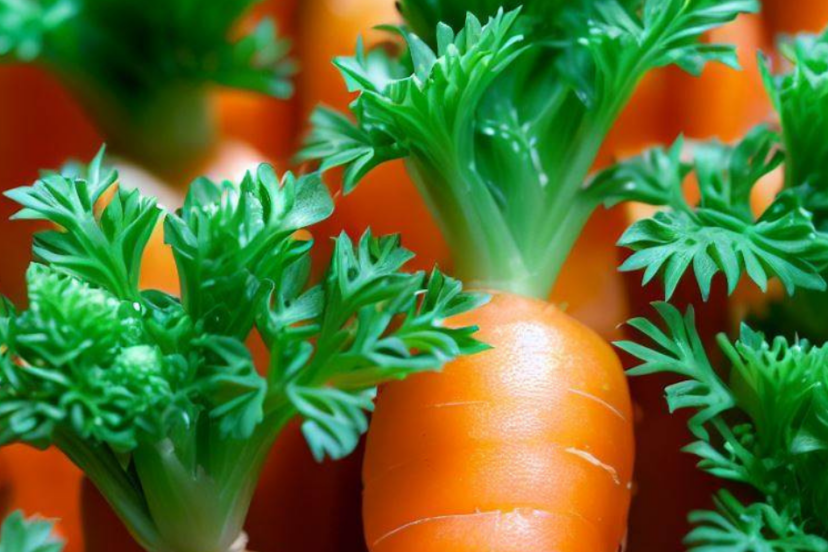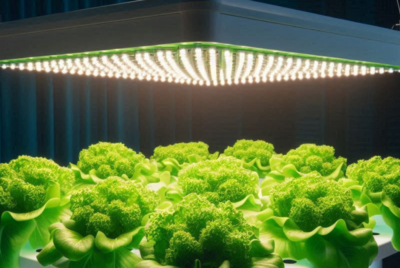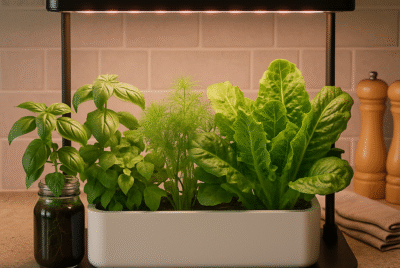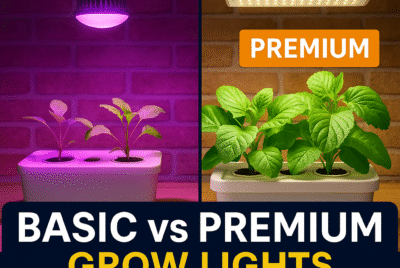Hydroponic Carrots: Growing Fresh and Flavorful Carrots All Year Round
Getting Started with Hydroponic Carrots
Top 5 Recommended Products to get you started:
All-in-one: AeroGarden Harvest – A compact, all-in-one hydroponic system that’s perfect for small spaces and urban environments.
Other products to consider are;
1. VIPARSPECTRA LED Grow Light – This powerful LED grow light is ideal for providing the necessary light spectrum for healthy carrot growth.
2. Hydrofarm Air Pump – A reliable air pump that ensures your hydroponic system is well oxygenated, promoting root health.
3. Advanced Nutrients pH Perfect Grow – A nutrient solution that simplifies the process of maintaining the correct pH levels in your hydroponic system.
4. AC Infinity CLOUDLINE PRO S6 – This fan helps to maintain good air circulation, preventing common issues like mold and mildew.
5. Hydrofarm Water Level Indicator – A handy tool that makes it easy to monitor and maintain the water levels in your hydroponic system.
Selecting the Right Carrot Varieties
Sourcing Quality Seeds or Seedlings
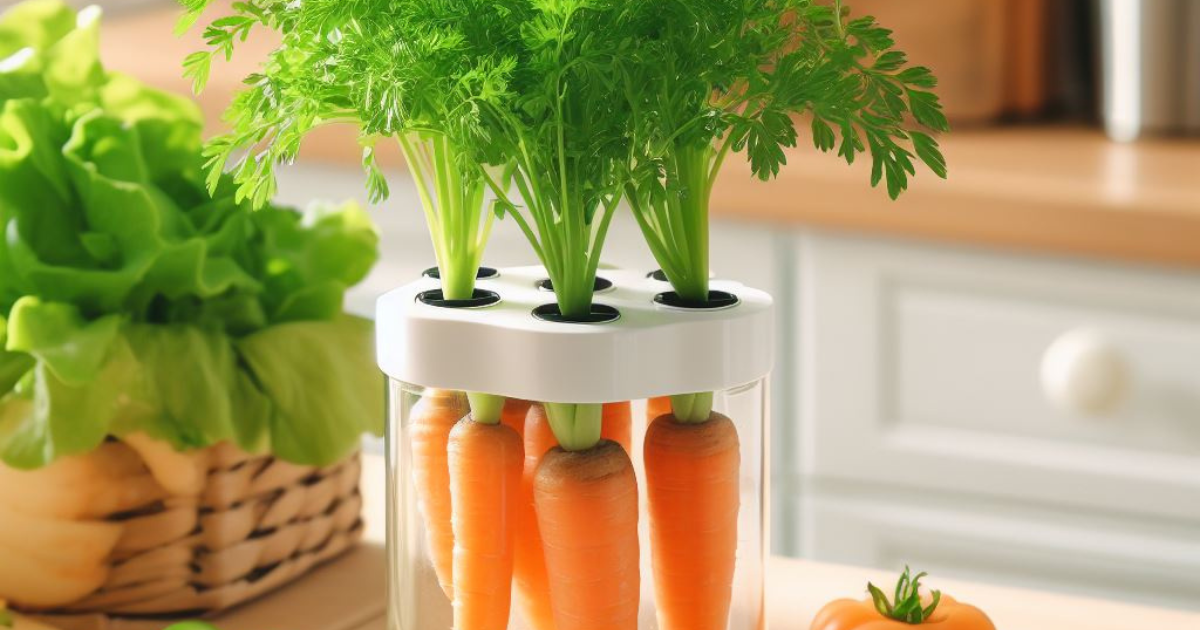
Hydroponic gardening has revolutionized the way we grow carrots, allowing for the cultivation of various unique carrot varieties in a soil-less environment. In this guide, we’ll explore the top 10 hydroponic carrot varieties. For each variety, we’ll provide insights into its origin, care instructions, and tips for a successful harvest.
1. Scarlet Nantes (common variety)
Origin: The Scarlet Nantes carrot, originally from France, is renowned for its sweet flavor and vibrant orange color.
Care Instructions & Tips:
– Soil pH: Keep the pH level between 6.0 and 6.5 for optimal growth.
– Spacing: Plant Scarlet Nantes carrots about 2 inches apart.
– Light: Provide at least 12 hours of light daily for healthy growth.
Harvest Tips:
– Harvest when carrots reach 6-7 inches in length.
– Gently pull them from the hydroponic system to avoid damage.
2. Dragon
Origin: The Dragon carrot, originating from the Mediterranean, is known for its striking purple color and slightly spicy taste.
Care Instructions & Tips:
– Nutrient Solution: Ensure a well-balanced nutrient solution to enhance color.
– Temperature: Maintain a temperature range of 60-70°F (15-24°C).
– Spacing: Space Dragon carrots about 1 inch apart for best results.
Harvest Tips:
– Harvest when carrots are around 6 inches long for the best color.
– Use a sharp knife to cut them from the hydroponic system.
3. Paris Market
Origin: Paris Market carrots, also called “Tonda di Parigi,” originate from France and are known for their petite, round shape.
Care Instructions & Tips:
– Container Size: Use a shallow container as these carrots don’t need deep growing space.
– Light: Ensure they receive at least 6-8 hours of light daily.
– Thinning: Thin seedlings to prevent overcrowding.
Harvest Tips:
– Harvest when they are approximately 1-2 inches in diameter.
– Gently pull them from the hydroponic system, preserving their shape.
4. Cosmic Purple
Origin: Cosmic Purple carrots, a vibrant purple variety, have their roots in the United States.
Care Instructions & Tips:
– Nutrient Solution: Provide ample phosphorus for vibrant color.
– Temperature: Maintain a consistent temperature between 60-70°F (15-24°C).
– Spacing: Space Cosmic Purple carrots about 2 inches apart.
Harvest Tips:
– Harvest when they reach 6-7 inches in length for the best taste and color.
– Use a knife to cut them from the hydroponic system.
5. Kaleidoscope
Origin: The Kaleidoscope carrot mix offers a colorful assortment and has no specific origin as it comprises various carrot varieties.
Care Instructions & Tips:
– Nutrient Solution: Maintain a well-balanced nutrient solution to support diverse colors.
– Container Depth: Use a deeper container to accommodate the different root depths.
– Spacing: Space them based on the specific varieties within the mix.
Harvest Tips:
– Harvest when individual carrots reach their ideal size, typically between 4-7 inches.
– Carefully remove them from the hydroponic system to avoid damaging neighboring carrots.
6. Lunar White
Origin: Lunar White carrots, as the name suggests, are white and originate from the United States.
Care Instructions & Tips:
– Light: Ensure they receive at least 8-10 hours of light daily.
– pH Level: Maintain a pH level around 6.0-6.5.
– Thinning: Thin seedlings to prevent overcrowding and encourage whiter roots.
Harvest Tips:
– Harvest when they are around 6 inches in length for the best flavor and texture.
– Gently pull them from the hydroponic system, handling them carefully.
7. Chantenay Red Cored
Origin: Chantenay Red Cored carrots originate from France and are known for their robust, tapered shape.
Care Instructions & Tips:
– Temperature: Keep temperatures between 60-70°F (15-24°C) for optimal growth.
– Spacing: Space them about 2 inches apart.
– Nutrient Solution: Provide ample potassium for strong roots.
Harvest Tips:
– Harvest when they reach 5-6 inches in length for the best flavor.
– Gently pull them from the hydroponic system, taking care not to damage their unique shape.
8. Little Finger
Origin: Little Finger carrots are a smaller variety originating from Europe.
Care Instructions & Tips:
– Nutrient Solution: Ensure they receive a nutrient solution rich in phosphorus for size.
– Spacing: Space them closer, about 1 inch apart.
– Thinning: Thin seedlings to allow adequate space for growth.
Harvest Tips:
– Harvest when they are approximately 3-4 inches long for the best flavor
and tenderness.
– Carefully pull them from the hydroponic system.
9. Rainbow
Origin: Rainbow carrots, like Kaleidoscope, offer a mix of colors and have no specific origin.
Care Instructions & Tips:
– Nutrient Solution: Maintain a well-balanced nutrient solution to support diverse colors.
– Container Depth: Use a deeper container to accommodate the different root depths.
– Spacing: Space them based on the specific varieties within the mix.
Harvest Tips:
– Harvest when individual carrots reach their ideal size, typically between 4-7 inches.
– Carefully remove them from the hydroponic system to avoid damaging neighboring carrots.
10. Kuroda
Origin: Kuroda carrots, originally from Japan, are known for their cylindrical shape and bright orange color.
Care Instructions & Tips:
– pH Level: Maintain a pH level between 6.0-6.5.
– Container Depth: Use a deeper container to accommodate their cylindrical roots.
– Spacing: Space Kuroda carrots about 2 inches apart for optimal growth.
Harvest Tips:
– Harvest when they reach 6-7 inches in length for the best flavor and texture.
– Gently pull them from the hydroponic system, handling them carefully to preserve their shape.
Setting up a Hydroponic Carrot Kit
Step 1: Designing Your kit
Step 2: Assembling the Components
Step 3: Preparing the Growing Medium
Step 4: Mixing the Nutrient Solution
Step 5: Planting Carrot Seeds or Seedlings
Nutrient Management for Hydroponic Carrots
Understanding Carrot’s Nutrient Requirements
Monitoring and Adjusting Nutrient Levels
Watering and Irrigation Techniques
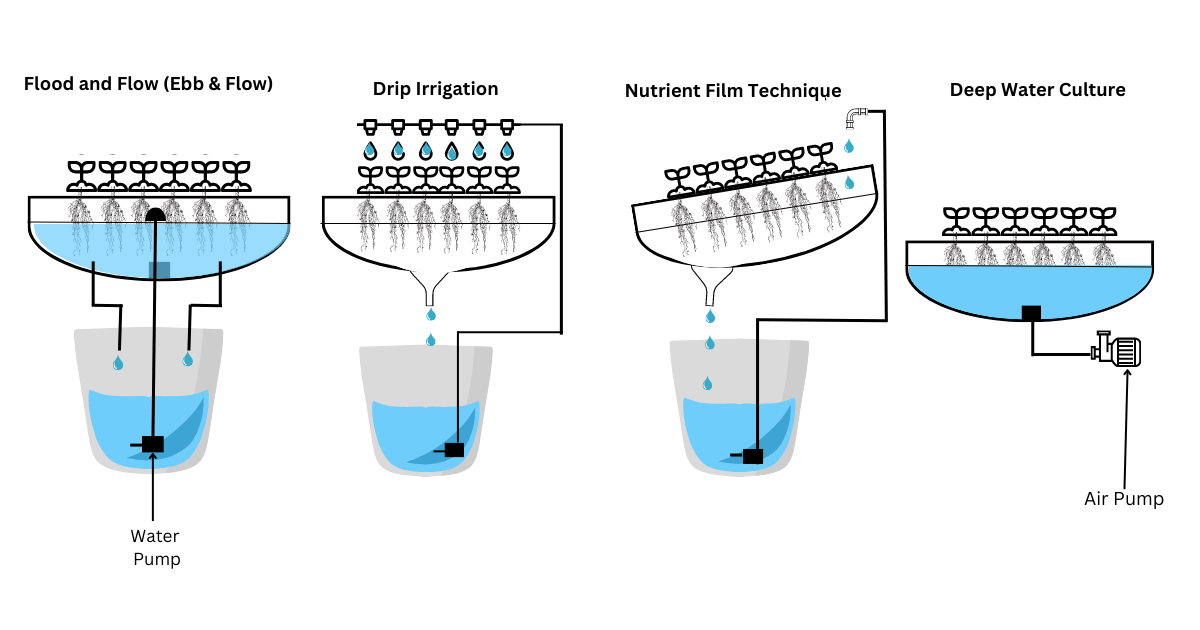 Proper watering and irrigation techniques are essential for the overall health and productivity of hydroponic carrots. Let’s explore some effective strategies:
Proper watering and irrigation techniques are essential for the overall health and productivity of hydroponic carrots. Let’s explore some effective strategies:Drip Irrigation System
Flood and Drain System
Light and Temperature Considerations
Providing Adequate Light
Managing Temperature
Pests and Disease Management
Preventive Measures
Organic Pest Control
Harvesting and Enjoying Hydroponic Carrots

Determining Harvest Readiness
Harvesting Techniques
Enjoying Your Hydroponic Carrots
Closing remarks
FAQs
1. Can I grow carrots hydroponically without soil?
2. How long does it take to grow hydroponic carrots?
3. What are some common challenges when growing hydroponic carrots?
4. Can I reuse the nutrient solution for multiple crop cycles?
5. How do hydroponic carrots compare to conventionally grown carrots in terms of taste and nutrition?
*We may earn a commission from purchases made through our links, at no cost to you. This does not affect our product recommendations. Please see our disclosure to learn more.

